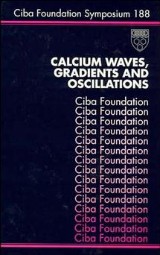Details

Calcium Waves, Gradients and Oscillations
Novartis Foundation Symposia, Band 188 1. Aufl.
|
121,99 € |
|
| Verlag: | Wiley |
| Format: | |
| Veröffentl.: | 30.04.2008 |
| ISBN/EAN: | 9780470514702 |
| Sprache: | englisch |
| Anzahl Seiten: | 302 |
DRM-geschütztes eBook, Sie benötigen z.B. Adobe Digital Editions und eine Adobe ID zum Lesen.
Beschreibungen
Renowned contributors provide comprehensive coverage of calcium gradients, waves and oscillations in diverse systems. Discusses the mechanisms initiating and sustaining calcium waves and their role in cell function. Describes studies using the latest techniques for measuring calcium ion gradients including chemiluminescent indicators.
Partial table of contents: <p>Calcium Waves and Development (L. Jaffe).</p> <p>Calcium Puffs in <i>Xenopus</i> Oocytes (I. Parker & Y. Yao).</p> <p>Spiral Calcium Waves: Implications for Signalling (P. Camacho & J. Lechleiter).</p> <p>Pancreatic Calcium Waves and Secretion. (H. Kasai).</p> <p>Calcium Signalling During Chemotaxis (F. Fay, <i>et al.</i>).</p> <p>Calcium Signalling in Cardiac Muscle Cells (W. Wier, <i>et al.</i>).</p> <p>Calcium Sparks in Cardiac Muscle (M. Cannell).</p> <p>Calcium Oscillations in Neurons (D. Friel).</p> <p>Calcium Signalling During Mammalian Fertilization (S. Miyazaki).</p> <p>Regulation of Nuclear Calcium Concentration (T. Meyer, <i>et al.</i>).</p> <p>Indexes.</p>
The <strong>Novartis Foundation</strong> is an international scientific and educational charity which promotes the study and general knowledge of science and in particular encourages international co-operation in scientific research.
Calcium Waves, Gradients and Oscillations Chairman: Michael J. Berridge 1995 Standing free gradients are widespread in living systems and changes in intracellular free Ca<sup>2+</sup> concentration, [Ca<sup>2+</sup>]<sub>i</sub>, are involved in controlling the responses of cells to many stimuli. Imaging techniques have revealed complex patterns of Ca<sup>2+</sup> distribution arising spontaneously or after stimulation of cells by hormones or neurotransmitters. In many cells, Ca<sup>2+</sup>- mobilizing agonists stimulate oscillations in [Ca<sup>2+</sup>]<sub>i</sub>, with the frequency of the concentration rises (‘spikes’) depending on the agonist concentration and the external Ca<sup>2+</sup> concentration. The Ca<sup>2+</sup> spikes are organized spatially as well as temporally, so that a regenerative wave spreads across the cell. Such Ca<sup>2+</sup> waves have been observed in many cell types: in hamster eggs, fertilization stimulates a Ca<sup>2+</sup> wave that spreads from the point of sperm entry to the opposite pole; in Xenopus oocytes, the Ca<sup>2+</sup> signal is initiated at several foci, with the waves spreading out symmetrically to give spheres or asymmetrically to give spirals. Most of the models proposed to explain the initiation and propagation of Ca<sup>2+</sup> waves involve positive feedback, with Ca<sup>2+</sup> amplifying its own release through an action on phospholipase C, generating periodic surges of inositol 1,4,5-trisphosphate (InsP<sub>3</sub>), or through Ca<sup>2+</sup>- induced Ca<sup>2+</sup> release. Propagation seems to depend on the regenerative release of Ca<sup>2+</sup> from internal stores controlled by the InsP<sub>3</sub> receptor or the ryanodine receptor. This book features studies of intracellular Ca<sup>2+</sup> gradients, oscillations and waves in various systems. Calcium gradients are best understood in tip-growing plants cells, medaka (fish) eggs and the mould Dictyostelium. Current knowledge of the initiation, propagation, characteristics, functional consequences and physiological significance of Ca<sup>2+</sup> oscillations and waves in heptocytes, in Cl<sup>-</sup> secretion from pancreatic acinar cells, in heart muscle cells and in neurons is presented. The mechanisms, form and importance of Ca<sup>2+</sup> waves in Xenopus oocytes and in mammalian fertilization are considered. The biochemical basis of Ca<sup>2+</sup> signals can spread as waves from cell to cell, through the action of a secreted intermediate (ATP) or by diffusion of InsP<sub>3</sub> or perhaps Ca<sup>2+</sup>, across gap junctions; studies of this process in epithelial cells and glial cells are featured. Related Ciba Foundation Symposia: No. 183 Circadian clocks and their adjustment Chairman: J. M. Waterhouse 1995 ISBN 0 471 94305 3 No. 164 Interactions among cell signalling systems Chairman: Y. Nishizuka 1992 ISBN 0 471 93073 3

















